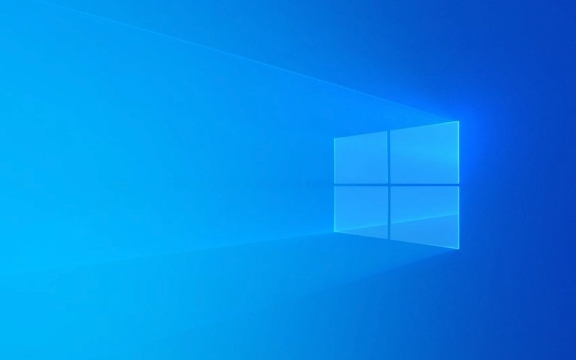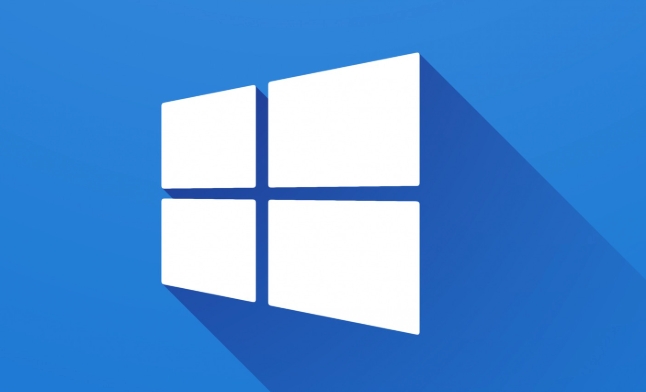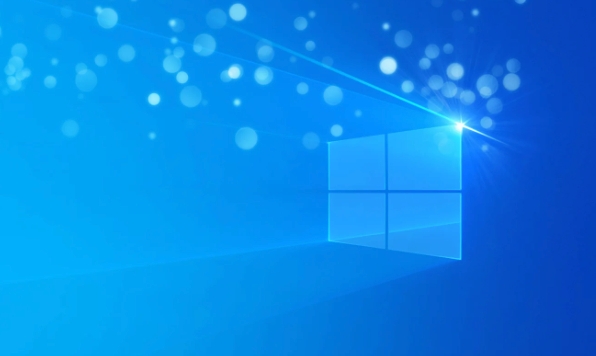How to fix a black screen with cursor on Windows
Jul 02, 2025 am 10:21 AMIf Windows has black screen and only has a mouse, it is mostly caused by excessive system resource usage, driver conflicts or startup item abnormalities. First, check whether the resource occupancy is too high. Press Ctrl Shift Esc to open the Task Manager to see if there are processes occupies a large amount of CPU or memory. If necessary, end suspicious processes or restart explorer.exe; secondly, try restarting Explorer, click "File" > "Run new tasks" in the Task Manager, enter explorer.exe to enter; thirdly update or roll back the graphics card driver, enter safe mode, uninstall or roll back the display adapter driver through the Device Manager, or use the DDU tool to completely clear it and then reinstall the official driver; fourthly, check the interference of startup items or third-party software, enter the "Start" tab of the Task Manager to disable unnecessary startup items, and uninstall the optimization software that may conflict in safe mode.

If Windows has black screen and only has a mouse, it is mostly caused by excessive system resource usage, driver conflicts or startup item abnormalities. The focus is on quickly judging the source of the problem and taking targeted measures. The following are several common processing directions and operation suggestions.

Check if the resource occupies too much
When the screen is black but you can see the mouse, it usually means that the system has been partially loaded successfully, but it may be that a process consumes too much CPU or memory, causing the desktop to not display normally.

- You can try pressing Ctrl Shift Esc to directly call up the task manager (if it can be opened) to see if a process occupies a large amount of resources.
- If the task manager can also be opened normally, you can try to end the suspicious process, especially when the explorer.exe is abnormal, you can right-click to restart it
- If the task manager cannot be opened, it may be that the system is stuck. At this time, you can try to force restart and enter safe mode to troubleshoot problems.
Restart Explorer (explorer.exe)
Many times, the process that explorer.exe, which is responsible for desktop display, crashes, and other system functions are actually still running.
- Press Ctrl Shift Esc to open Task Manager
- Click "File" > "Run new task"
- Enter
explorer.exeand enter
This allows you to reload the desktop environment. If you find that the desktop suddenly appears after typing, it means that it is indeed an explorer problem.

Update or rollback graphics card driver
The graphics card driver is incompatible or the update fails to update can also lead to a cursor on the black screen, especially after the driver has been updated.
- Click the "Performance" tab in Task Manager to see if the GPU information is displayed normally
- If you suspect it is a driver problem, you can try:
- Enter safe mode
- Open Device Manager and find the Display Adapter
- Right-click the current graphics card driver and select "Uninstall device" or "Rollease driver"
- After restarting, let the system automatically reinstall the basic driver
You can also use the DDU (Display Driver Uninstaller) tool to completely clear the driver before installing the official version.
Check for start-up items or third-party software interference
Some third-party software will start automatically when it is powered on, which may conflict with the system and lead to a black screen.
- Go to Task Manager and switch to the "Start" tab
- Check which software is set to "Enable", you can right-click to disable some non-essential startup items
- Restart again and try to restore normal
If some optimization software (such as acceleration tools, beautification tools, etc.) have been recently installed, it may also affect the stability of the system. It is recommended to uninstall these software in safe mode.
Basically, these common solutions are all the common solutions. Start with the simplest restart of explorer and gradually troubleshoot resource usage, driver and startup items. The operation is not complicated, but details are easy to ignore, such as whether you have actually entered safe mode, whether you have completely uninstalled the driver, etc.
The above is the detailed content of How to fix a black screen with cursor on Windows. For more information, please follow other related articles on the PHP Chinese website!

Hot AI Tools

Undress AI Tool
Undress images for free

Undresser.AI Undress
AI-powered app for creating realistic nude photos

AI Clothes Remover
Online AI tool for removing clothes from photos.

Clothoff.io
AI clothes remover

Video Face Swap
Swap faces in any video effortlessly with our completely free AI face swap tool!

Hot Article

Hot Tools

Notepad++7.3.1
Easy-to-use and free code editor

SublimeText3 Chinese version
Chinese version, very easy to use

Zend Studio 13.0.1
Powerful PHP integrated development environment

Dreamweaver CS6
Visual web development tools

SublimeText3 Mac version
God-level code editing software (SublimeText3)
 How to change the system display language for all users in Windows
Jul 31, 2025 am 08:18 AM
How to change the system display language for all users in Windows
Jul 31, 2025 am 08:18 AM
InstallthedesiredlanguagepackviaSettings→Time&Language→Language®ion,ensuring"SetasmyWindowsdisplaylanguage"isselected.2.Changethesystemdisplaylanguageinthesamemenuandrestart.3.OpenControlPanel→Region→Administrativetab,click"
 How to reset the Microsoft Store in Windows
Jul 31, 2025 am 08:23 AM
How to reset the Microsoft Store in Windows
Jul 31, 2025 am 08:23 AM
ResettheMicrosoftStoreviaSettingsbygoingtoApps>Installedapps,selectingMicrosoftStore,clickingAdvancedoptions,thenRepairandResetifneeded.2.Ifthatfails,re-registertheStoreusingPowerShellasadminwiththecommand:Get-AppXPackage-NameMicrosoft.WindowsStor
 How to reset the TCP/IP stack in Windows
Aug 02, 2025 pm 01:25 PM
How to reset the TCP/IP stack in Windows
Aug 02, 2025 pm 01:25 PM
ToresolvenetworkconnectivityissuesinWindows,resettheTCP/IPstackbyfirstopeningCommandPromptasAdministrator,thenrunningthecommandnetshintipreset,andfinallyrestartingyourcomputertoapplychanges;ifissuespersist,optionallyrunnetshwinsockresetandrebootagain
 How to install Windows on a Mac without Boot Camp
Jul 31, 2025 am 11:58 AM
How to install Windows on a Mac without Boot Camp
Jul 31, 2025 am 11:58 AM
Without BootCamp, installing Windows on Mac is feasible and works for different chips and needs. 1. First check compatibility: The M1/M2 chip Mac cannot use BootCamp, it is recommended to use virtualization tools; the Intel chip Mac can manually create a boot USB disk and install it in partition. 2. Recommended to use virtual machines (VMs) for M1 and above chip users: Windows ISO files, virtualization software (such as ParallelsDesktop or UTM), at least 64GB of free space, and reasonably allocate resources. 3. IntelMac users can manually install it by booting the USB drive: USB drive, WindowsISO, DiskU is required
 Step-by-step guide to installing Windows from an ISO file
Aug 01, 2025 am 01:10 AM
Step-by-step guide to installing Windows from an ISO file
Aug 01, 2025 am 01:10 AM
DownloadtheWindowsISOfromMicrosoft’sofficialsite.2.CreateabootableUSBusingMediaCreationToolorRufuswithaUSBdriveofatleast8GB.3.BootfromtheUSBbyaccessingthebootmenuoradjustingBIOS/UEFIsettings.4.InstallWindowsbyselectingcustominstallation,choosingtheco
 A guide to custom Windows installation options
Aug 01, 2025 am 04:48 AM
A guide to custom Windows installation options
Aug 01, 2025 am 04:48 AM
Choose"Custom:InstallWindowsonly(advanced)"forfullcontrol,asitallowsacleaninstallthatremovesoldissuesandoptimizesperformance.2.Duringsetup,managepartitionsbydeletingoldones(afterbackingupdata),creatingnewpartitions,formatting(usingNTFS),ors
 How to install Windows on a Mac
Jul 31, 2025 am 10:07 AM
How to install Windows on a Mac
Jul 31, 2025 am 10:07 AM
ForIntel-basedMacs,useBootCampAssistanttocreateadual-bootsystemwithWindowsbypreparingaUSBdrive,downloadingaWindowsISO,partitioningthedisk,andinstallingWindowsalongsidemacOSwithsupportdrivers.2.ForAppleSiliconMacs(M1/M2/M3),usevirtualizationsoftwareli
 How to manage AppLocker policies in Windows
Aug 02, 2025 am 12:13 AM
How to manage AppLocker policies in Windows
Aug 02, 2025 am 12:13 AM
EnableAppLockerviaGroupPolicybyopeninggpedit.msc,navigatingtoApplicationControlPolicies,creatingdefaultrules,andconfiguringruletypes;2.Createcustomrulesusingpublisher,path,orhashconditions,preferringpublisherrulesforsecurityandflexibility;3.Testrules






